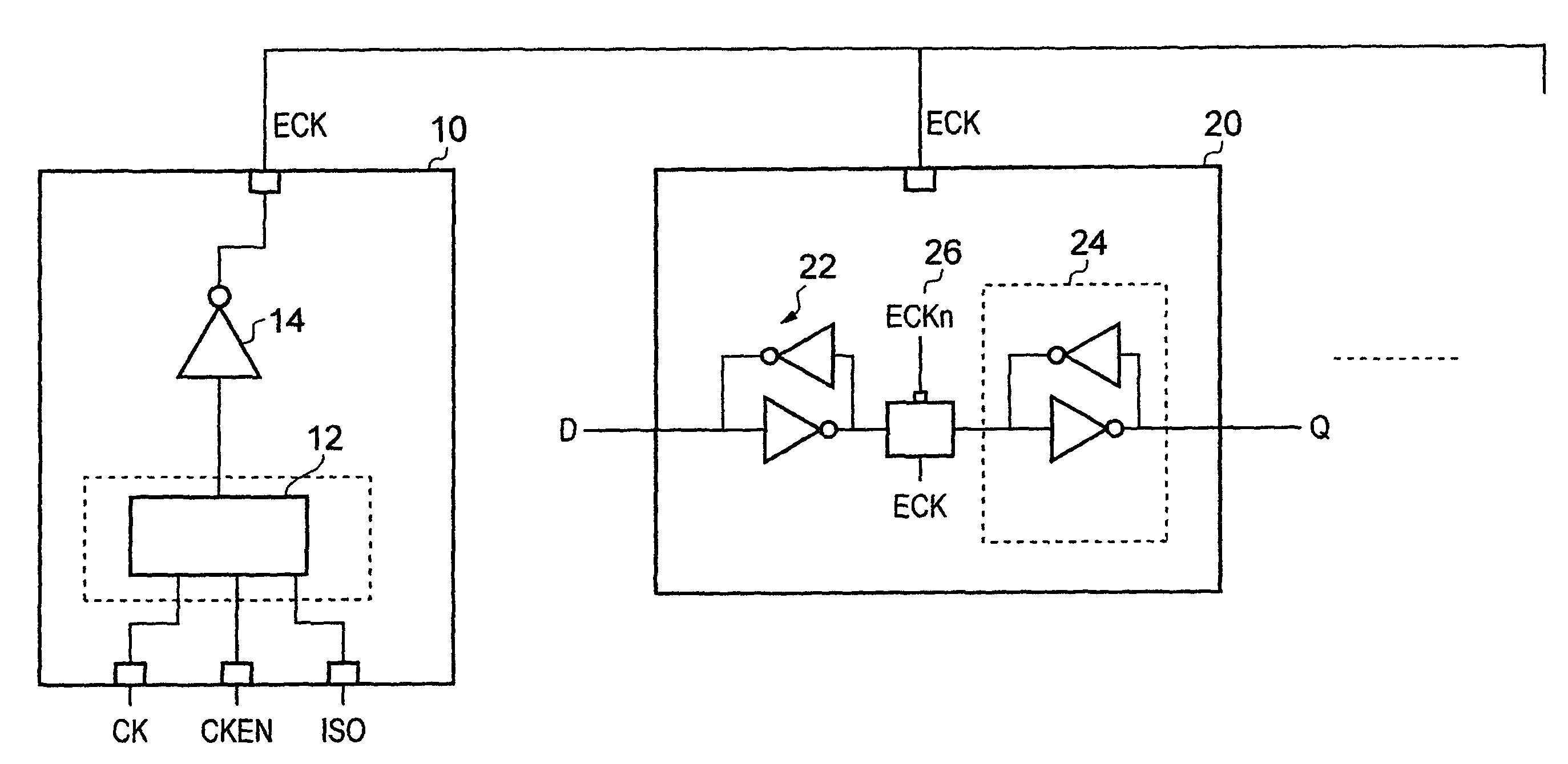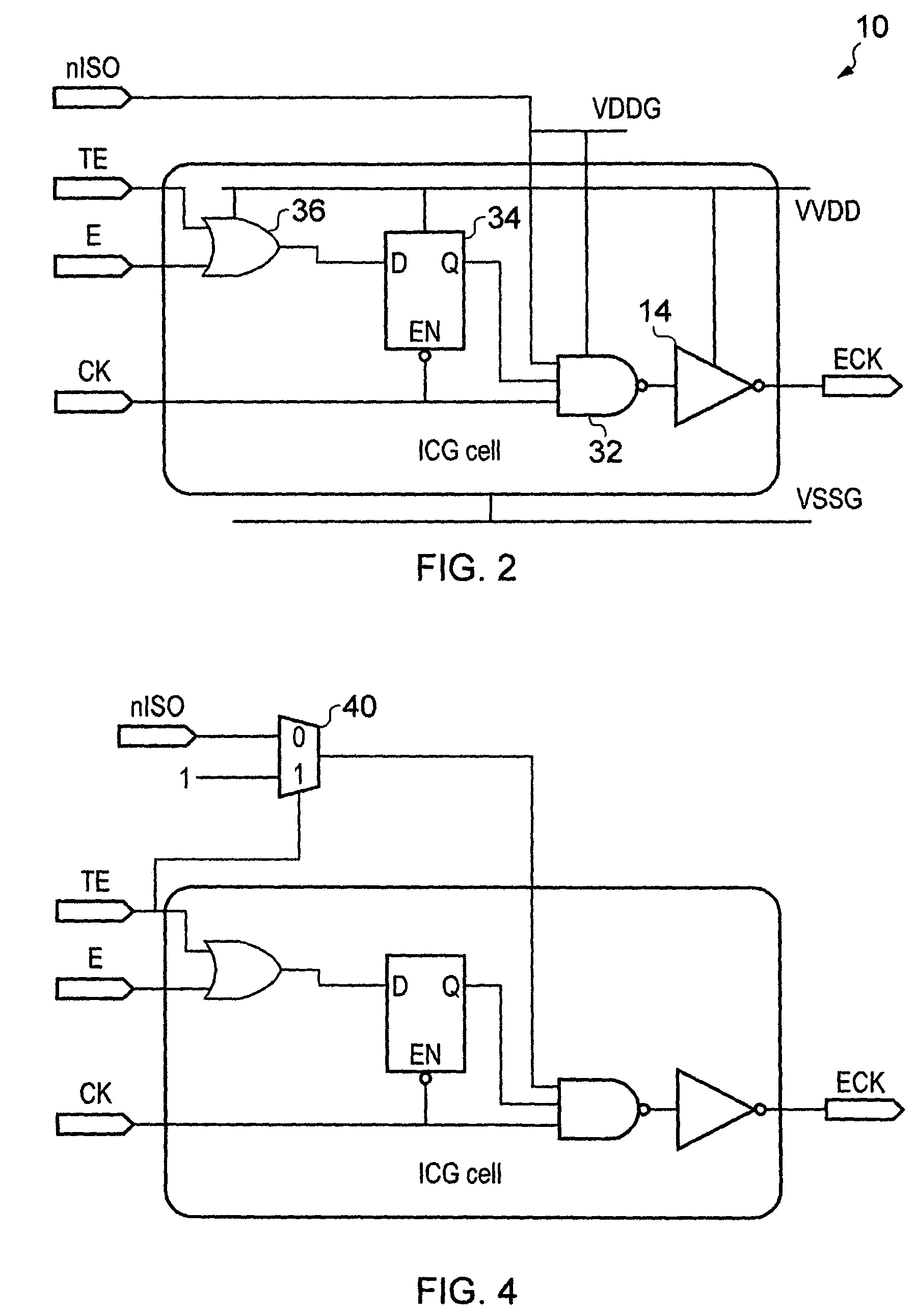Supplying a clock signal and a gated clock signal to synchronous elements
a clock signal and gated clock technology, applied in the field of data processing, can solve the problems of loss of circuitry state, large power consumption of clock signals, and significant power consumption, and achieve the effect of reducing area and routing overheads
- Summary
- Abstract
- Description
- Claims
- Application Information
AI Technical Summary
Benefits of technology
Problems solved by technology
Method used
Image
Examples
Embodiment Construction
[0055]FIG. 1 shows a clock gating cell 10 supplying a clock signal ECK to a state retention circuit 20. In this embodiment state retention circuit 20 is a master slave flip-flop having a master latch 22 and a slave latch 24. These are separated from each other by transmission gate 26 which receives the clock signal ECK and transmits a data signal from the master latch 22 to the slave match 24 in response to the clock signal ECK being high and isolates the slave latch 24 from the master latch 22 in response to the clock signal ECK being low. In this figure elements surrounded by the non-continuous line are powered by a first power supply that is constantly powered while those not surrounded by the non-continuous line are powered by a second power supply that is powered down in a low power standby mode.
[0056]Clock gating cell 10 is formed of logic circuitry 12 which receives a clock signal CK a clock enable signal CKEN and a low power isolation signal ISO. It also has an inverter 14. ...
PUM
 Login to View More
Login to View More Abstract
Description
Claims
Application Information
 Login to View More
Login to View More - R&D
- Intellectual Property
- Life Sciences
- Materials
- Tech Scout
- Unparalleled Data Quality
- Higher Quality Content
- 60% Fewer Hallucinations
Browse by: Latest US Patents, China's latest patents, Technical Efficacy Thesaurus, Application Domain, Technology Topic, Popular Technical Reports.
© 2025 PatSnap. All rights reserved.Legal|Privacy policy|Modern Slavery Act Transparency Statement|Sitemap|About US| Contact US: help@patsnap.com



